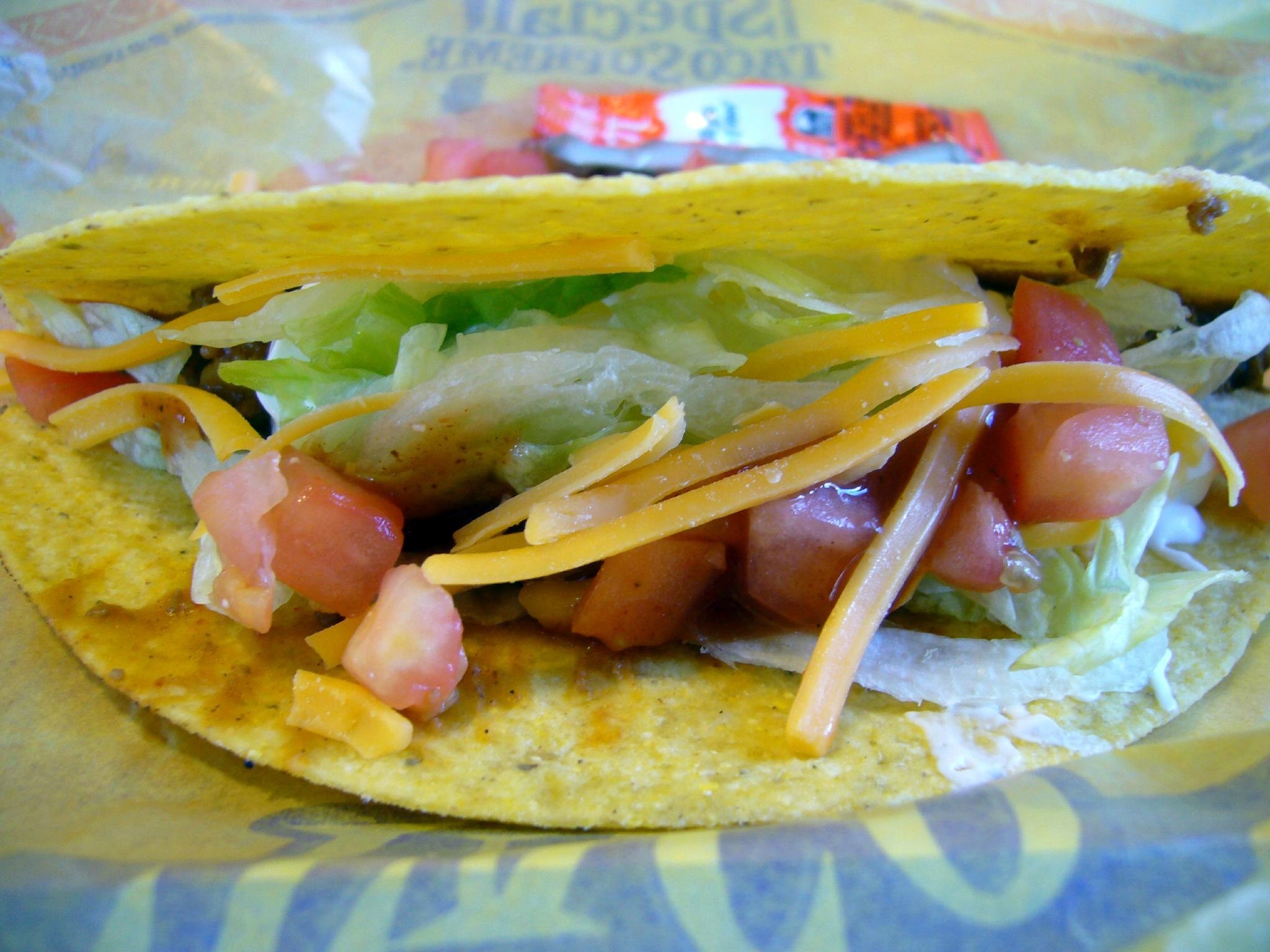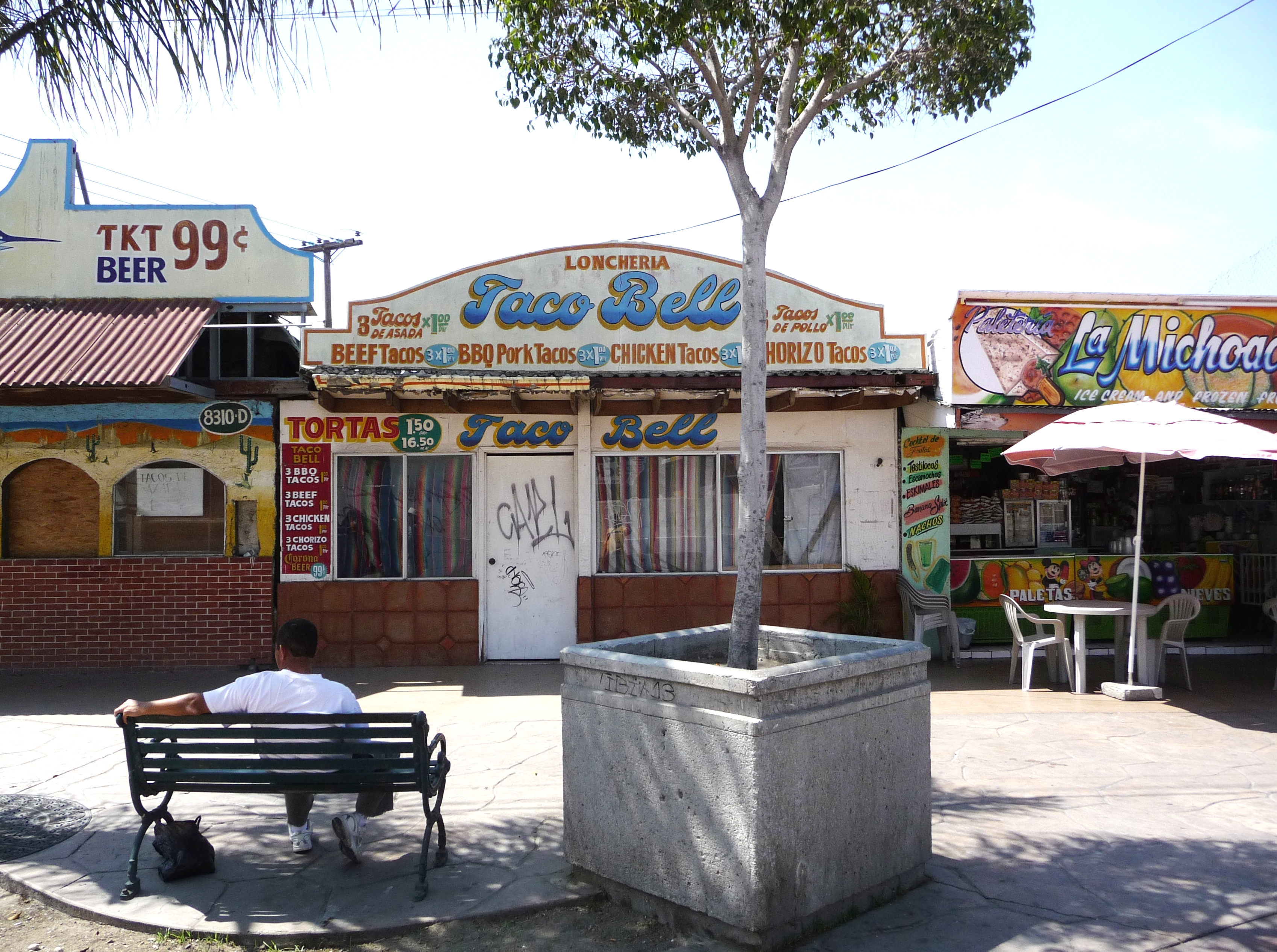Taco Bell currently has 6,604 outlets in 22 countries and territories throughout the world, and over the next five years, it plans to push into Peru, Finland, Sri Lanka, and Romania—and add at least 100 locations each in China, Brazil, India, and Canada. Yes, on the tiny Micronesian island of Guam—which has a population of only 174,214—there are currently seven Taco Bells. But despite all that, you might be shocked to learn there is not a single Taco Bell currently in operation in the nation that gave birth to its titular taco.
That’s right: There are no Taco Bells in Mexico. But that sure as hell isn’t for a lack of trying. And then trying again.
Videos by VICE
Taco Bell’s forays into Mexico started back in 1992, when the chain had only around 3,700 restaurants, the vast majority of which were in the US. The company made its first stab at the Mexican market with a food cart in Mexico City, which served a limited menu of soft-shell tacos and burritos, along with Pepsi, the chain’s corporate owner at the time. A few other outlets were briefly opened next to KFC locations.
Problems arose from the get-go. The wildly inauthentic names of several popular Taco Bell items had to be changed because Mexican customers didn’t understand what exactly they were ordering. For instance, the crunchy taco—an anomaly in Mexico—had to be re-branded the “Tacostada,” thereby evoking the crunchiness of a tostada in taco form.

Still, the Mexican population wasn’t buying it. One iconic comment on the issue came from Carlos Monsivais, a cultural critic, who spoke to the Associated Press at the time and dubbed the attempt to bring tacos to Mexico “like bringing ice to the Arctic.” In short order, the first Taco Bells in Mexico were shut down less than two years after opening and the chain retreated back across the border.
But by the mid-aughts, Taco Bell was ready to try to break into the Mexican market once again. In 2007, when the fast-food company opened another outlet south of the border, the Chicago Tribune wrote that the move meant “the cultural walls fell for good.” Hopes were high; after almost a 15-year absence, Taco Bell could once again be found in our southern neighbor Mexico—this time next to a Dairy Queen in the parking lot of a fancy shopping mall just outside of Monterrey.
READ MORE: I Ate Lunch at the ‘Original’ Taco Bell
This second attempt called for a new approach. “We’re not trying to be authentic Mexican food,” explained Rob Poetsch, who was the director of public relations at Taco Bell at the time. “So we’re not competing with taquerias. We’re a quick-service restaurant, and value and convenience are our core pillars.” Poetsch claimed that this venture would be different, because the brand had changed by then—it had become more international, with 230 locations outside of the US—and a consumer-research team had been put in place. The goal was to reach 800 international locations, with 300 stores to open throughout Mexico. In 2008 alone, Taco Bell planned to open between eight and ten locations throughout Mexico.
At that first Monterrey location, Taco Bell made no attempts to hide how gringo-ish its food really was. French fries and soft-serve ice cream proudly held forth on the menu; Steven Pepper, the Yum! Brands Managing Director of Mexico admitted, “Our menu comes almost directly from the US menu.” In fact, a half-page newspaper ad that ran at the time came straight out and told the public, “One look alone is enough to tell that Taco Bell is not a ‘taqueria.’ It is a new fast-food alternative that does not pretend to be Mexican food.”
The branding strategy summed it all up succinctly: “Taco Bell is something else.”
Something else, indeed.
Once again, critics were skeptical. Scott Montgomery—CEO of Brandtailers, a California ad agency—said, “It’s like Mexicans coming up and trying to sell us hot dogs.” Customers agreed. Marco Fragoso, an office worker remarked to the Associated Press at the time, “They’re not tacos. They’re folded tostadas. They’re very ugly.” Another customer, Jonathan Elorriaga, told the AP reporter, “Something is lacking here. Maybe the food shouldn’t come with French fries.”
A food writer for Monterrey’s El Norte newspaper summed it all up with the following: “What foolish gringos. They want to come by force to sell us tacos in Taco Land. Here, they have a year in operation and the most ironic part is that they are doing well. Are we malinches [a Mexican term for traitor] or masochists?”
The new stores closed in swift succession, and pundits tried to explain the debacle. Some chalked the second failure up to the political climate in 2007: the mid-aughts were indeed an era of tougher enforcement of immigration laws and the inability to pass temporary-worker laws in the US. Meanwhile, Taco Bell’s contemporaneous move into the China market—where the outlets served soy milk and plum juice—was much more successful than the chain’s second attempt to sell Mexican food to Mexicans.
ON NOISEY: I Spent All of 4/20 in Taco Bell
Taco Bell has stayed out of the Mexican market ever since. Today, the idea of a Taco Bell in Mexico has become something of a joke. There’s even a Facebook page for a non-existent Taco Bell in Mexico City that has a one-star review and is littered with comments deriding the chain. One Facebook user from Culhuacán left a comment on the page saying “NO SON TACOS, SON CHINGADERAS,” which translates to “They are not tacos, they are trash.” In a TripAdvisor post asking what ever happened to the Taco Bell in Mexico City, a user from Mexico City wrote the following: “In 29 years I’ve never seen a Taco Bell in Mexico City… or in Mexico, although I could be wrong. I agree to bring a Taco Bell here it’s a pretty bad idea. Taco Bell… is everything but Mexican food.”
Truth be told, there is one Taco Bell left in Mexico… sort of. When you cross the border from California into Tijuana, you may come across a cluster of decidedly un-corporate-looking taco stands called, well, Taco Bell. They even have a bell as their logo, but the bell is yellow instead of the chain’s pink. Evidently, this joint has absolutely no affiliation with the Irvine, California-based chain. You’ll know you’re in the right place because—if the Yelp reviews are accurate—this Taco Bell has no running water, the bathrooms are “disgusting,” and there are flies aplenty. But the beers cost a buck, and the tacos are legit street-style—and truthfully don’t sound bad at all.

When MUNCHIES reached out to Taco Bell and asked if it had any plans to re-enter the Mexican market in the future, a spokesperson provided us with the following statement: “We’ve changed our international expansion strategy in recent years, focusing on open-kitchen restaurant concepts that feature localized design, menu offerings, shareable plates and beer and alcohol. We are on track with this approach to grow to 9,000 restaurants in more than 40 countries by 2022, and have identified four partners in key markets where we will open 100 restaurants: Brazil, Canada, China and India. While we’re not currently in Mexico, we are seeing continued success in the more than 130 Taco Bells in Central and South America, as well as across the globe.”
In the end, nothing better encapsulates the Sisyphean task that was trying to convince proud Mexicans that they should willingly ditch the nation’s countless taquerias in favor of an American fast-food chain than Taco Bell’s no-longer-used “run for the border” slogan. After all, each time Taco Bell attempted an ill-advised foray into Mexico, the result was a mad dash back to the States.
This post originally appeared on MUNCHIES in July 2017.




